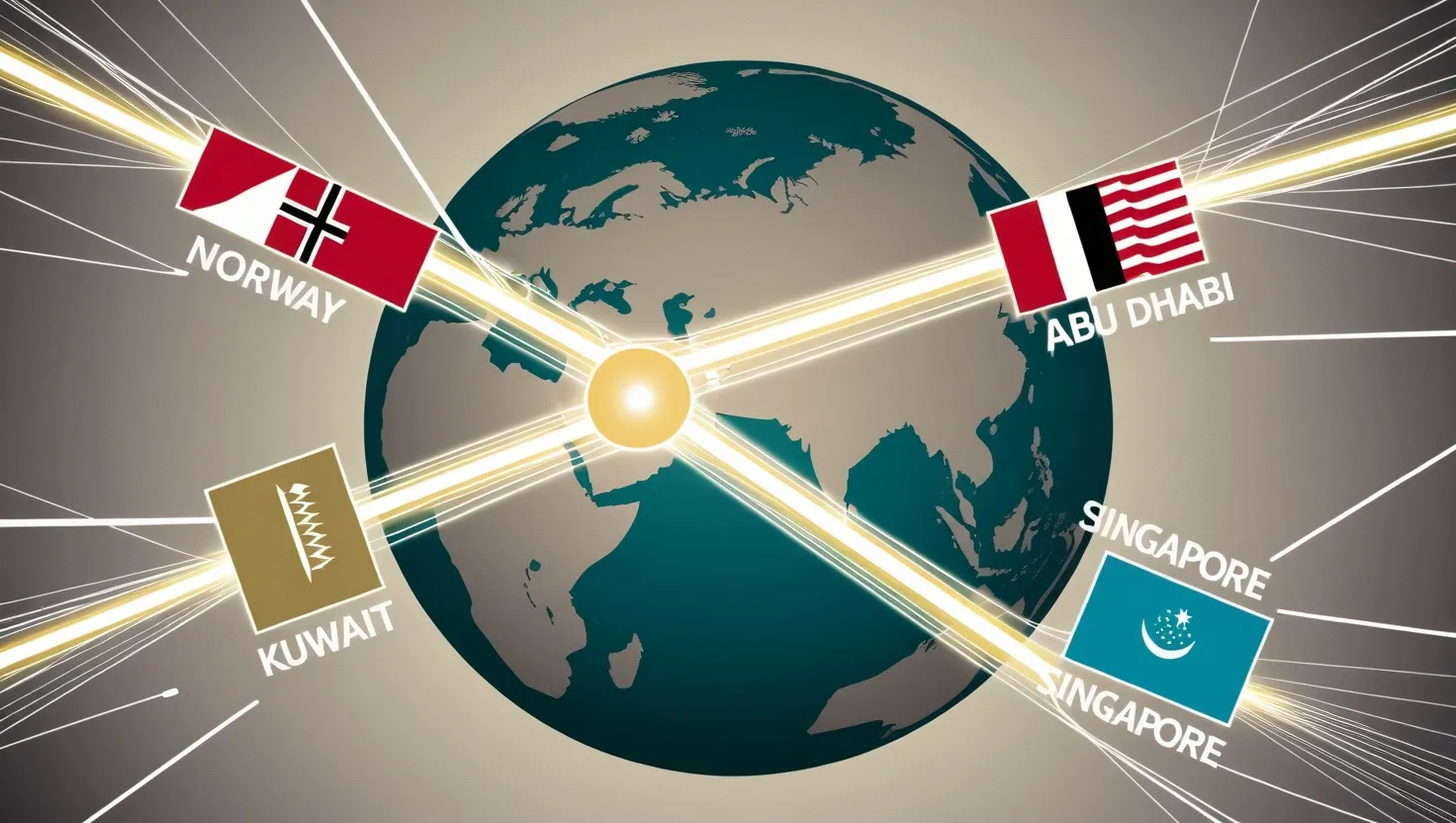In the vast and intricate landscape of global finance, a select group of sovereign wealth funds (SWFs) stands out for their significant influence on investment trends, economic policies, and geopolitical dynamics. These funds, managed by some of the world’s most financially savvy nations, are not just passive investors; they are active shapers of the global economic order.
Let’s start with Norway’s Government Pension Fund Global (GPFG), often regarded as a benchmark for responsible and long-term investing. The GPFG is a behemoth, with its capital entirely invested abroad in foreign currencies. This strategy allows Norway to maximize returns while minimizing the impact on its domestic market. The fund’s investment approach is rooted in financial theory and research, aiming to balance risk and return over the long term. Unlike many other SWFs, the GPFG is highly transparent and adheres strictly to ethical guidelines, avoiding investments in companies involved in human rights abuses, environmental degradation, or other unethical practices.
This ethical stance is not merely a moral imperative but also a strategic move. By investing in companies with strong governance and sustainability records, the GPFG ensures that its investments are resilient to long-term risks. This approach has made the fund a model for other SWFs, demonstrating that financial returns and ethical considerations are not mutually exclusive.
On the other side of the globe, the China Investment Corporation (CIC) operates with a different set of priorities. Established in 2007, CIC was created to manage China’s vast foreign exchange reserves and to support the country’s national interests. Unlike the GPFG, CIC’s investments are often driven by strategic objectives that go beyond pure financial returns. For instance, CIC’s investments in natural resources and key sectors like semiconductors are crucial for China’s economic development and technological advancement.
CIC’s role extends beyond mere investment; it is a tool of soft power for China. By investing in companies and projects around the world, CIC helps to secure China’s influence in global markets and geopolitics. This dual role makes CIC a unique player in the SWF landscape, blending financial acumen with geopolitical strategy.
In the Middle East, the Abu Dhabi Investment Authority (ADIA) is another powerhouse that has been shaping global investment trends. With assets under management that rival those of the GPFG, ADIA is known for its sophisticated investment approach, which spans a wide range of asset classes and geographical regions. Unlike some SWFs that focus heavily on domestic investments, ADIA has a global outlook, investing in everything from real estate and private equity to hedge funds and infrastructure projects.
ADIA’s investment strategy is characterized by its long-term perspective and a willingness to take calculated risks. This approach has allowed the fund to weather financial storms and emerge stronger. ADIA’s influence is not limited to financial markets; it also plays a significant role in promoting economic development in Abu Dhabi and the broader UAE. By investing in strategic sectors, ADIA helps to diversify the UAE’s economy, reducing its dependence on oil revenues.
Kuwait’s Investment Authority (KIA) is another SWF that has been making waves in global finance. Established in 1953, KIA is one of the oldest SWFs and has a rich history of managing Kuwait’s wealth. Unlike some of its peers, KIA has traditionally been more conservative in its investment approach, favoring fixed income and equities over more exotic asset classes.
However, in recent years, KIA has begun to diversify its portfolio, investing in private credit, real estate, and other alternative assets. This shift reflects a broader trend among SWFs, which are increasingly seeking to balance defensive strategies with opportunistic investments. KIA’s role in Kuwait’s economic development is pivotal, as it helps to manage the country’s oil revenues and invest them in a way that ensures long-term prosperity.
Last but not least, there is Singapore’s GIC Private Limited, a fund known for its exceptional investment acumen and strategic foresight. GIC is unique in that it operates with a high degree of autonomy, allowing it to make swift and decisive investment decisions. This agility has enabled GIC to capitalize on emerging trends and opportunities, often ahead of other investors.
GIC’s investment strategy is highly diversified, with a strong focus on equities, fixed income, and alternative assets. The fund is also known for its active ownership approach, engaging closely with the companies it invests in to ensure they are managed in a sustainable and responsible manner. This approach not only enhances financial returns but also contributes to the long-term health of the companies and the broader economy.
One of the lesser-known facts about these SWFs is their role in promoting national economic development. For instance, CIC’s investments in China’s tech sector have been instrumental in fueling the growth of companies like Alibaba and DiDi. Similarly, ADIA’s investments in Abu Dhabi have helped to transform the city into a financial and economic hub.
However, these funds also face significant challenges. Balancing financial returns with ethical considerations is a constant dilemma. For example, the GPFG’s strict ethical guidelines sometimes mean forgoing investments that could yield high returns but come with ethical risks. Political sensitivities are another challenge; investments by SWFs can often be seen as politically motivated, leading to scrutiny and criticism.
Despite these challenges, these SWFs continue to shape global investment trends in profound ways. Their influence extends beyond financial markets to economic policies and geopolitical relationships. They are not just passive investors but active participants in the global economy, driving growth, innovation, and development.
In conclusion, the world of sovereign wealth funds is complex and multifaceted, filled with unique strategies, challenges, and opportunities. These five funds—Norway’s GPFG, China’s CIC, Abu Dhabi’s ADIA, Kuwait’s KIA, and Singapore’s GIC—stand as exemplars of how national wealth can be managed to achieve both financial returns and broader national objectives. As the global economic landscape continues to evolve, the role of these SWFs will only become more pivotal, influencing not just markets but the very fabric of international relations and economic development.






